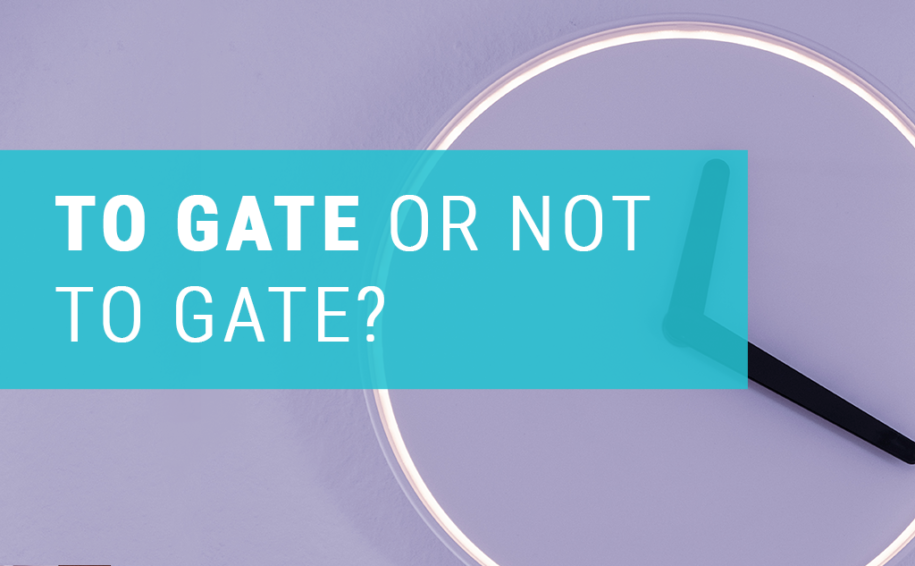Most senior marketers agree that the key to successful customer engagement is getting the customer experience right. Understanding customer touch points, when to offer content for free, when to exchange it for contact details and when to turn a lead into a sale all blend together to create your new customer experience and a solid content marketing strategy.
But at what touch point in the buyer journey does it actually begin? Those top of the funnel, initial conversations with leads are actually the start of the customer experience. And to get this right, marketing teams need to blend technology and content. From your inbound efforts to that first form fill for a high value asset, like a white paper, these touch points are key in building the foundation for good customer experience.
What’s more, the decision of when to obtain that first data capture is the key, defining aspect of your marketing strategy. We look at the why, what and when of gating content or using dynamic web forms as a lead capture strategy.
Why - It's still the strongest driver of lead generation
Content gates are a staple in the world of content marketing. You will have no doubt heard of content gating techniques and when you should apply them to your assets (which could be white papers, guides, webinars, etc.). A good content gating strategy does ultimately depend on how valuable your asset is, and whether or not your audience is willing to part with their details for it. In a recent report, Starfleet Media say that nearly 80% of b2b content marketing assets are gated.
Marketing technology changes constantly yet content gating remains one of the strongest forms of data capture available. Apart from surveys, on-site forms are the best way to obtain valuable information from potential leads.
What and When - an exchange of lead information for a high value asset
As we said above, routes to engage with your audience seem to change almost daily. Which social channel, which landing page, when to use dynamic web forms…The question is what’s best for you? Does your organization gate content (or use dynamic web forms) on your website and on landing pages? Do you look at your analytics reports to see which types of content are the most successful?
Because of the varying range of assets, from infographics to 1:1 consultations, content marketing strategies need to know which types of content that leads are willing to exchange their details for. Looking at those consideration stage touchpoints, guides and webinars usually prove the most successful when it comes to content gating.
However, that’s not always the case as some industries might find that case studies drive initial leads…In fact, according to Instapage, across the buyer journey, there are different assets that are “usually” most successful as gated content. Have a look at these suggestions – how well do you know your buyer personas? Do they follow a similar pattern to these suggestions?
- Awareness stage – infographics, podcasts, e-books, white papers
- Consideration stage – webinars, trial downloads, case studies
- Decision stage – these offers need to be the most powerful, 1:1 consultations, free trials and product demos work best
In terms of value, you can see from the above that the higher the value the more likely your audience will exchange their details. Using techniques such as progressive profiling, Starfleet Media show that infographics and case studies are less likely to be gated yet content marketers find them useful branding tools and therefore still invest in them. Because these assets are strong tools for keeping leads that are further into the buyer journey warm.
How - The best ways to deploy a content gate
Your content marketing team might not be involved heavily with your marketing operations team. You may simply hand over your asset – whichever it is – and your marketing technology team deploy the web forms through your marketing automation platform, like Eloqua or Marketo.
Even if this isn’t an area for your department, it’s useful to know that how you gate content is incredibly important. Doing this cost effectively, with one system in place, reduces scaling time and synchronizes data capture for cleaner data.
To get to grips with how on-site forms are deployed on your business websites and landing pages, speak with your marketing technology team.
Getting the balance right
Many businesses struggle to decide which content to gate. But using the logic above, you can break it down with a few easy questions:
- At what stage are your buyers when they find this piece of content?
- What level of value exchange is the content worth?
- Do your competitors offer a similar exchange?
Reviewing your content in this way ensures your content is relevant with your key messages at the forefront of your buyer journey.
GatedContent.com are specialists in web conversion forms helping global enterprises roll out content gating strategies efficiently at scale. If you’d like to discuss advanced web form management with GatedContent.com, please get in touch!
